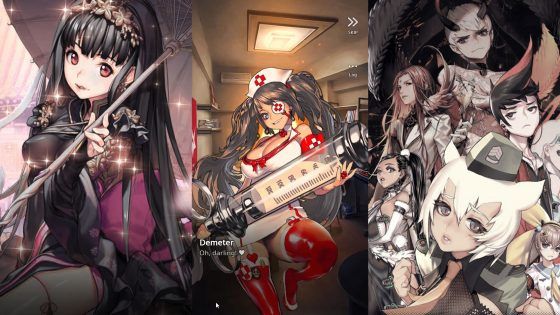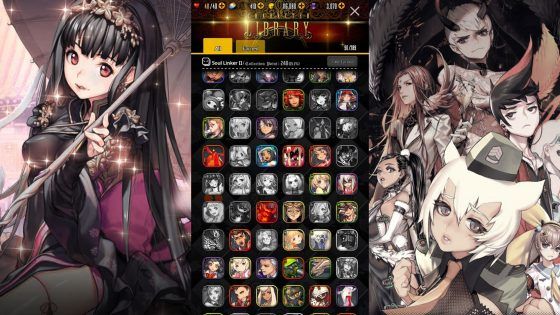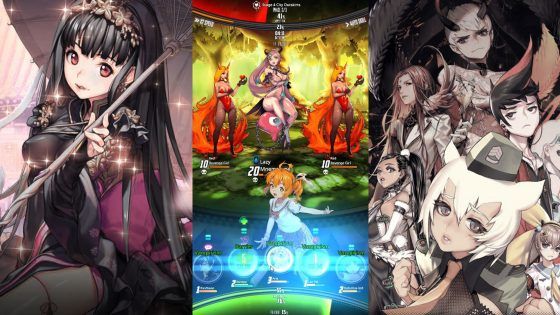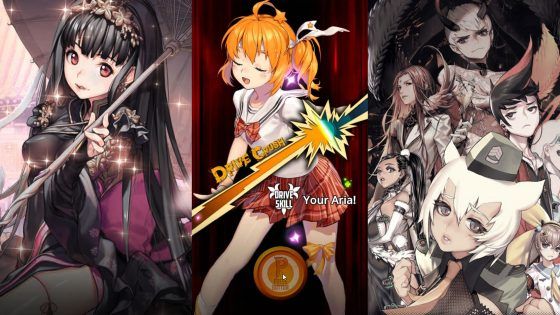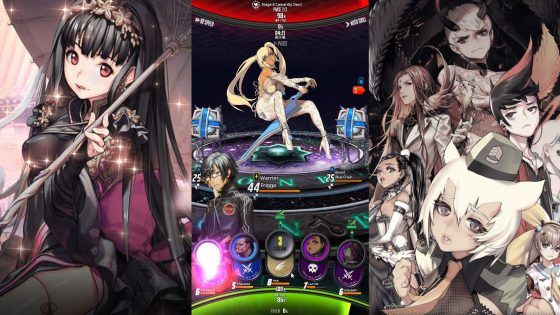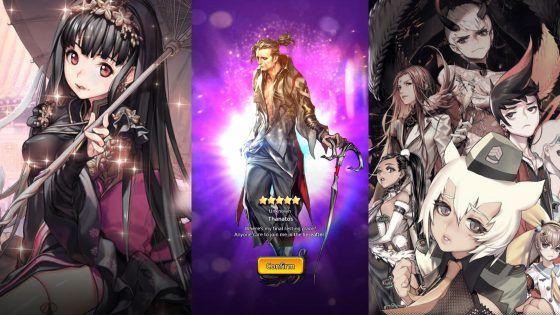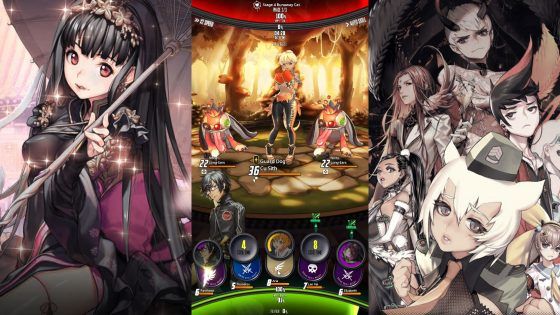Destiny Child is every bit as weird as they come. While it is advertised as a collectible card game, it is difficult to label it solely based on the character collecting aspect – or childs, as they are called in the game. Originally released in Korea in 2016, its biggest selling point is the stunning character artwork created by Hyung-Tae Kim, the man behind Blade & Soul’s art direction. Destiny Child is ostensibly aimed at the mature players, as there is quite a bit of fan service going around. Truth be told, you won’t be playing Destiny Child for its ‘intense’ battles or ‘unrivaled depth.’
Destiny Child’s combat system is a bit too frantic for its own good. There is just too much going on in the battles to truly feel like you have a significant impact in their outcome. If there is a game where the auto-battle button is essential, then this is the one. Let’s collect those characters without the bother of relentless button mashing.
Censored or not censored, that is the question
Going straight to the point that every potential Destiny Child player is wondering: the global release of Destiny Child is censored indeed, lacking the significant extra appeal of the original Korean version. In fact, this release seems to play it completely safe, but there are ways to revert the game to its original glory (wink wink). I won’t tell you about it here, but make sure to do your research if you really want to take Destiny Child to the next level, so to speak.
Before I get into the details, let’s take a few moments to talk about lore. In Destiny Child, you are a socially awkward demon that grew tired of life in the Infernal Realm and decided to move to the Mortal Realm, working a part-time convenience store job. Sounds like a dream, doesn’t it? Unwillingly, he is tricked into entering the Archfiend Contest, where he is one of the many candidates to the succession of the Archfiend Lucifaro. In the Mortal Realm, you must recruit childs, which are demon familiars born from human desires. For example, a miserable nurse is one of your initial targets.
Destiny Child has a very rich story, in case you want to keep up with all the intricacies and innuendo that is going on between your character and your guide Mona, as they go on about their quest for new recruits. It’s mostly lighthearted and silly, and you will probably find it rewarding if you take the time to read it, which I doubt many players will. There are English subtitles, but it is fully voiced in Korean, in case you choose to download the official voice pack.
With more than 300 childs to recruit or summon, you can be sure that Destiny Child is a game for the long run. Other than making it your priority title, it works nicely as a side-game, one that you go to when you have some time to kill. Each child has different star ratings and abilities, and needs to be fully developed through several means. These include using and enhancing equipment to upgrading their skills, uncapping their limits, or awakening them to boost their stats. There is always some kind of requirement for these actions, but most of them use your precious and hard-earned in-game gold.
Enhancing equipment such as weapons and armor is done through the combination of similar items. Child skills require Onyx currency to level up, and the same goes for the awakening section, which can take your character up to S rank. In case you are low on Onyx, you can extract some from childs that you don’t want to keep. Of course, you can use crystals for the crucial child summoning, which uses an old-style Gacha system. You can also use friend coins to summon equipment and other bonuses. Ultimately, it’s all about increasing your Battle Power in any way that you can.
Bootylicious
Destiny Child’s battle system is extremely simple, almost to the point of doing without any player interaction altogether. You pick your strongest team of five childs and enter the battlefield, where you must win a predetermined set of rounds against the rival team. Normal skills can be used just by clicking when the colored bar circling each character is complete, or you can choose to use a slide skill instead for a more powerful attack, but this will make the child inactive for a few seconds.
The strongest blows come from the drive skills. There is a drive gauge that constantly fills as you attack, and when it is full you can activate a drive skill for your chosen character. This opens a small minigame (blink and you’ll miss it) where you must tap with perfect timing – the closer to the center of the circle, the better the attack.
If you perform almost flawlessly and the battle takes long enough, you will eventually unlock Fever Time. During a few seconds, your attacks will have devastating effects, with each child having a different Fever effect.
In theory, this is a basic but effective setup that could lead to interesting clashes, but there is so much going on that it’s hard to have an actual impact in the way that the battles unfold. It’s preferable to leave them to the auto-battle system, knowing that you’re still responsible for the use of the all-important drive skills – these are the ones that truly make the difference.
But I’m yet to discover someone who is enjoying Destiny Child for the ‘unrivalled depth’ that its battle system offers…Don’t get me wrong, there is an intrinsic appeal to overcoming story chapters and climbing the ranks on PvP and other challenges. It’s just that the battle system feels more like a means to an end, instead of a fully developed, crucial part of the game. With such production values on display, a little more effort into this part wouldn’t hurt.
The Writing’s on the Wall
The story campaign just won’t cut it when you must to upgrade your childs through any means available. That is when you’ll turn to the alternatives found in the Night World, such as the above-mentioned PvP. Known as Devil’s Rumble, this is a ticket-based showdown where you are matched with other players of similar rank, and there are leagues to climb. It’s the asynchronous type of PvP, where you fight the AI and not an actual person, but you are battling someone else’s team, so it’s always compelling when you get those winning streaks.
The Underground is another place that deserves your attention. This place will challenge you through several stages, with occasional rewards in-between, but with one condition: your health and drive gauge will carry over to the following battle. This means that when a child dies, you must pick a replacement for the next confrontation, and so on until you win the stages, or your entire roster is annihilated. Healing is vital in this mode, so make sure that you have a child capable of doing so.
You can also send your childs on expeditions to bring back rewards. Since you’re still able to use them in any battle, this is a resourceful method of earning several rewards without any kind of downside to it. Destiny Child has a stamina system, but unless you play the game endlessly, it shouldn’t be a hindrance at all.
Gameplay: 5/10
Destiny Child doesn’t offer anything outstanding in this specific department. You will spend most of your time browsing the menus, upgrading your team and tapping away at every reward that comes your way until you enter the next battle. Once you face your enemy, it’s a matter of frantically tapping and sliding until it ends. It sounds far from thrilling because, quite frankly, it’s not.
Innovation: 5/10
Destiny Child is a collectible card game at heart and you know how many of these are out there, particularly on mobile. I would add that it looks and feels a lot like a hero collector game as well, so we are talking about two of the most beaten to death genres in recent years. It scores a few points for its interesting use of Live2D, making the characters spring to life in sometimes disjointed but often attractive ways.
Learning Curve: 8/10
The battle system tutorial will be out of the way in a few minutes and the rest of the game should feel instinctive, unless you haven’t touched the genre at all. The UI is clean and comprehensive, and soon enough you will be collecting and upgrading childs without any trouble.
Graphics / Sound: 8/10
The art style is clearly the highlight of Destiny Child, with the talented creations from the Blade & Soul art director springing to life thanks to the use of Live2D. Some of the characters almost feel 3D thanks to the enormous number of different parts that they are composed of, but the downside is that a few of them move in weird ways.
There is no denying that the eye-candy is the reason for Destiny Child’s huge success in Korea and Japan. While the global version seems to be watered down in comparison, the censored art isn’t any less dazzling. On the other hand, I can’t come to terms with some of the childs that you’ll find – shapeless blobs and weird sentient objects, among others. They almost feel like placeholder material that ended up making it into the final build of the game.
ESTi’s work on the soundtrack is an accomplished one, with smooth, tranquil sounds during the menus and heavier tracks while in battle.
Value for Money: 8/10
Being a free game and one with a heavy focus on grind, you should know what to expect, right? Either you play for long days and nights to summon and evolve most of the childs, or you give your game a little boost by spending some cash. You can do just fine without going to the in-game store for a while, but as soon as you decide to get serious about Destiny Child, you may have to strongly consider it. Nonetheless, it is enjoyable and perfectly playable without spending a dime.
Overall: 7/10
Destiny Child could be rated in two very different ways: a very commendable one for those who are excited for the character collecting aspect, and a not so enthusiastic way for any player who is looking for a game with a deep, strategically stimulating combat system. Sitting somewhere in the middle, I would say to give the game a look if you don’t mind having to deal with Gacha every step of the way. Who knows, maybe your child collection will make it all worthwhile.
Pros
• Fan service art style and Live2D tech
• Heavily story-based with plenty of silly humor – if you care
• Over 300 characters
Cons
• Censored global version, for some reason
• Frantic battles but tactically lacking
• Gacha plays a huge role in your success
